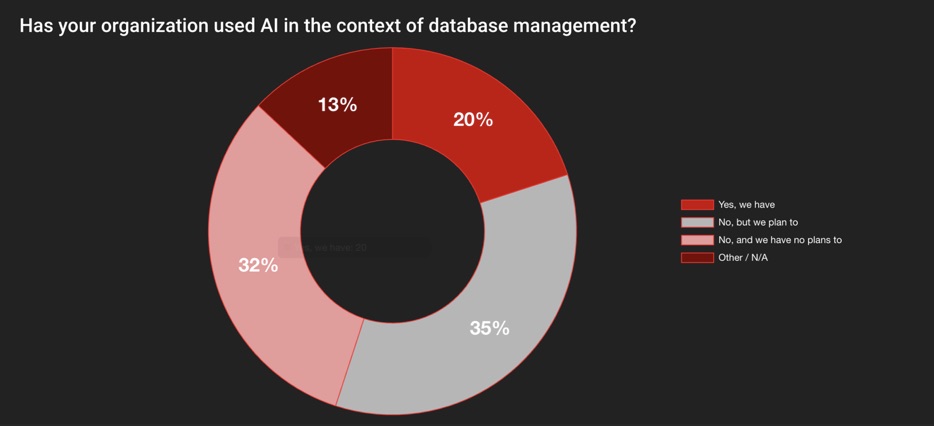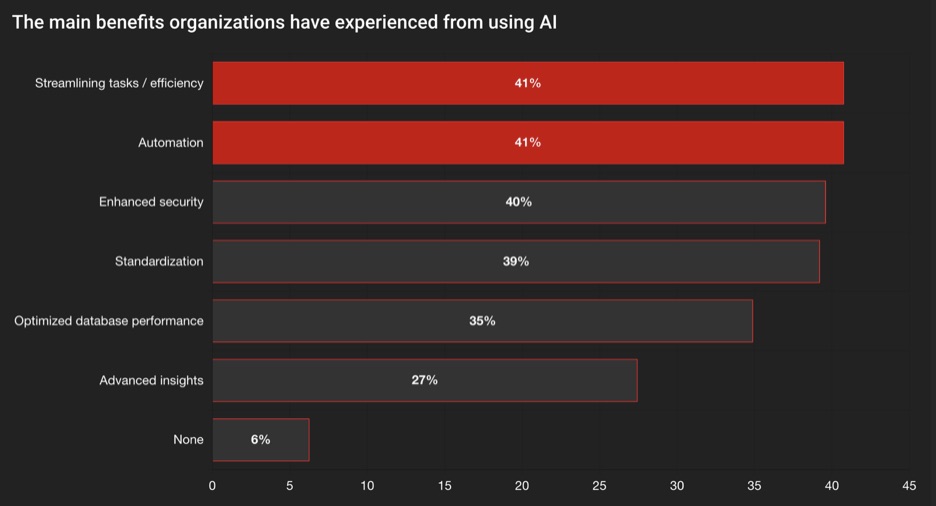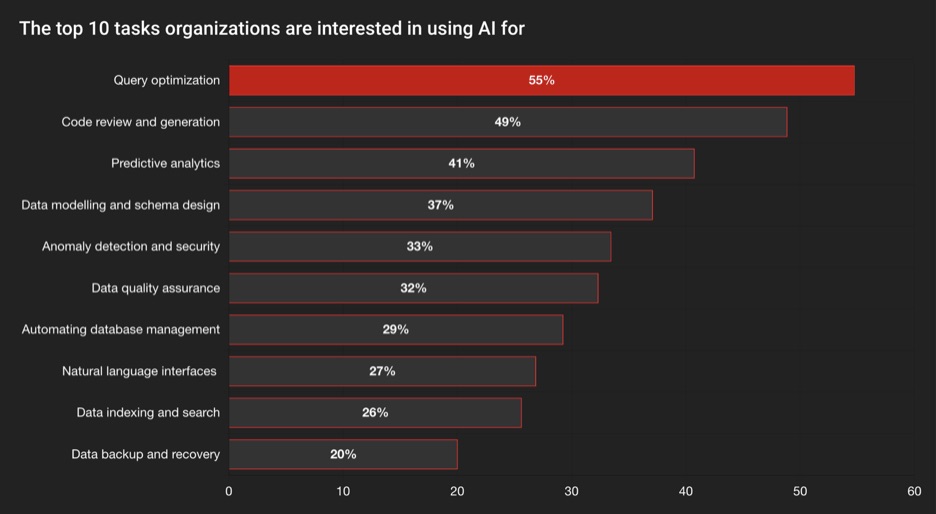Generative AI and large language models (LLMs) are becoming essential in data-driven businesses. With increasing pressures on time and resources, as well as growing complexity, AI offers critical support. It's not about AI replacing jobs, but rather about companies missing growth opportunities if they don't take advantage of AI tools. Businesses that fail to leverage AI may find themselves at a disadvantage compared to those that do.
But when do we make the shift to AI, and how?
We surveyed IT professionals on their attitudes and practices regarding using Generative AI with databases. We asked how they are layering the technology in with their systems, where it's working the best for them, and what their concerns are. Our 2024 survey on the State of the Database Landscape engaged 3,849 global IT professionals from all kinds of businesses, from large to small, and across 15 industry sectors.
You're Not Late Yet
We found that 20% of our respondents are already using AI in the context of database management, and 35% are planning to. We believe that many of the 32% who say they don't currently have plans to use AI will change their tune in the next few years.

AI is not a panacea. It is a tool like any other, and it requires active and wise technological leadership to keep it aligned with business objectives. As Jeff Foster, our director of technology and innovation, says, "You need decent code reviews, human oversight and process-based guardrails to help prevent the buildup of technical debt."
How It's Used
Generative AI may be just a tool, but it is a unique one, as reflected in how people are using it in database development. More than any other task, our survey respondents are using AI for testing and development tasks that involve database schema (65%). AI is also used for generating and optimizing queries and code, and for generating sample data. These are areas where AI has unique and powerful benefits.
We believe it's critical to understand that, at the phase of AI adoption in the database business, the tool is best used to support IT professionals in the day-to-day performance of their jobs. As we can see in how Generative AI is currently being used, its greatest impact today comes from streamlining and automating tasks. Using it for generating business insights is far down on the most popular uses.

We believe AI will ultimately be integrated into business decisions and that its use for "insights" will increase. However, that should not happen before we use the technology to make IT pros' jobs easier. Focusing on IT worker productivity will serve to get the group trained up on AI's capabilities, while providing them a time-saving benefit in their day to day.
We think it's appropriate and promising that the #1 task that organizations are looking at AI to streamline is query optimization. That's exactly the kind of work that benefits from human judgment combined with the pattern-matching skills of AI.

Generative AI will have a significant impact in many aspects of our jobs, as well as in the fundamental products and services that companies sell. But business will always be competitive, and at all levels of employment, from entry-level coder to CEO, it will remain necessary to apply human creativity to find ways to use — not be used by — technology. The more work we do to provide our IT professionals with exposure to these tools today, the more successful they will be in the future.


